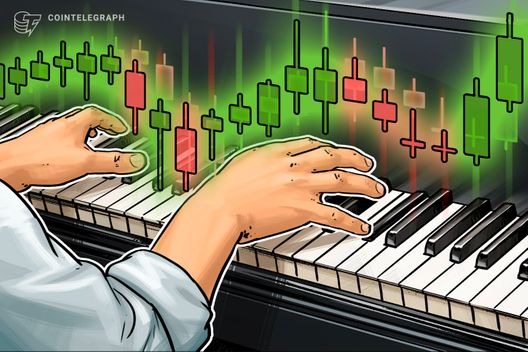CPI report may show uptick in US inflation — How will Bitcoin price react?
The S&P 500 index is currently trading only 6% below its all-time high, which was reached in January 202. Traditionally, such a situation would be seen as a bullish sign for risk-on assets, including commodities and cryptocurrencies, but this time, it appears that investors have been using the stock market as a means of protection against the recent inflation surge, which sustained at over 4% between April 2021 and May 2023.
For Bitcoin (BTC) and cryptocurrency investors, inflation has typically been viewed as a positive factor influencing the price, as evidenced by the previous all-time highs of $65,000 and $69,000 that occurred during a period of monetary expansion and increasing inflation in 2021. However, the current situation is different because inflation is making a comeback while the Federal Reserve has been effectively reducing liquidity in the system. As a result, the impact of inflation on cryptocurrencies remains uncertain.
Is the tech stock bubble bursting?
The recent seven-day decline in tech giants — including Fortinet (FTNT) with a decrease of 25.7%, Block Inc. (SQ) with a drop of 20.5%, PayPal (PYPL) down by 15%, Shopify (SHOP) down 14.8% and Palo Alto Networks (PANW) down 13.9% — has caught the attention of investors, particularly in light of the expectation of an additional interest rate hike by the Federal Open Market Committee on Sept. 20.
Economists predict that the Consumer Price Index for July, which will be revealed on Aug. 10, will be around 3.3%, surpassing the previous month’s figure of 3% and exceeding the central bank’s 2% target. Given the latest unemployment rate of 3.5% in June, nearing a 40-year low, the Fed moving toward tightening the economy becomes more certain.
Gold, a traditional safe haven, has struggled to surpass the $2,000 mark on multiple occasions since 2020, indicating a lack of confidence in its ability to hedge against risks.

The real estate market has also been impacted, facing limited housing supply and rising mortgage rates, as evidenced by Redfin’s second-quarter revenue drop of 21% compared to the previous year. The company expects a further decline of 15% to 20% in transaction value for Q3.
Even traditional safe assets like bonds are losing some of their appeal due to the ongoing increase in the United States federal debt. Investment mogul and hedge fund billionaire Bill Ackman reportedly shorted 30-year U.S. Treasury bonds, expressing concerns about long-term inflation.
A July 31 report by the U.S. Treasury Department revealed a $1 trillion quarterly net borrowing estimate and an unexpected Fitch Ratings downgrade of U.S. debt, further fueling concerns in the financial markets.
Consequently, investors are now seeking alternative markets, and Bitcoin whales have increased their leverage long positions using derivatives despite the cryptocurrency’s price remaining around $29,500.
Bitcoin’s price support at $29,000 is backed by solid derivatives metrics
Bitcoin quarterly futures typically trade at a slight premium relative to spot markets, as sellers demand more money to delay the settlement. Healthy markets usually display BTC futures contracts trading at a 5% to 10% annualized premium, a situation known as contango, which is not unique to crypto markets.

The BTC futures premium (or basis rate) on platforms like Deribit and OKX reached 8%, the highest in over three weeks. This higher premium signals pro traders are willing to pay an additional cost to engage in leverage longs, thus reflecting a positive sentiment toward Bitcoin.
Traders can also gauge the market’s sentiment by measuring whether more activity is going through call (buy) options or put (sell) options. A 0.70 put-to-call ratio indicates that put option open interest lags the more bullish calls and is, therefore, bullish. In contrast, a 1.40 indicator favors put options, which can be deemed bearish.

The put-to-call ratio has been below 1.0 since July 24, revealing a strong demand for call (buy) instruments. Such data suggests investors’ optimism for the potential price appreciation of Bitcoin.
There is a growing indication that Bitcoin might potentially benefit from the inflation surge. However, if investors start to believe that the Federal Reserve’s idea of a soft landing for the economy is unlikely and that a severe recession is on the horizon, they are likely to favor Treasurys and cash positions initially.
In the short-to-mid term, there is not much evidence to suggest that Bitcoin will experience a significant surge if inflation becomes widespread in the United States. Nevertheless, there is hope for bullish investors, as the cryptocurrency has shown solid support at the $29,000 mark.
This article is for general information purposes and is not intended to be and should not be taken as legal or investment advice. The views, thoughts, and opinions expressed here are the author’s alone and do not necessarily reflect or represent the views and opinions of Cointelegraph.







